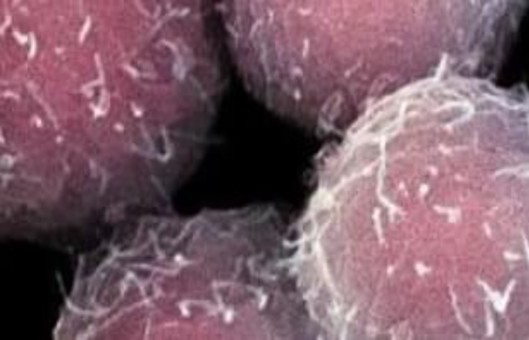Characterization of Human-Induced Pluripotent Stem Cells
Biotechnology Reports. 2023 Jan 24; 37: e00784.
Authors: Suresh Babu S, Duvvuru H, Baker J, Switalski S, Shafa M, Panchalingam KM, Dadgar S, Beller J, Ahmadian Baghbaderani B.
INTRODUCTION
Human induced pluripotent stem cells (iPSC) have demonstrated massive potential for use in regenerative and personalized medicine due to their ability to expand in culture and differentiate into specialized cells with therapeutic benefits. However, to industrialize iPSC-derived therapies, it is necessary to address the existing challenges surrounding the analytics implemented in the manufacturing process to evaluate and monitor cell expansion, differentiation, and quality of the final products.
Flow Cytometry-Based Identity and Purity Testing of iPSC
Designing appropriate flow cytometry panels depends on (i) the starting material, (ii) pluripotent stem cells generated through reprograming or established during expansion covering both iPSC and human ESCs, and (iii) directed differentiation into the final cell therapy product.
Cell Counting and Viability (CCV)
Cell counting and viability is an often-overlooked consideration, as it seems to be a simple method, but a critical step to determine an accurate number of viable cells in a given cell suspension and is an integral part of cell line development. The design of an appropriate CCV assay depends on cell type, heterogeneity of the cell suspension, and cell culture format (i.e. single cells or aggregated cells).
Reprogramming Clearance
Clearance or residual assays need to be customized depending on the reprogramming process such as plasmid transfection, and transduction of plasmids using virus/ viral vectors and transposons. More sensitive methods can be found in newer technologies, such as analysis by digital droplet PCR or (ddPCR), Next Generation Sequencing (NGS). Digital droplet PCR (ddPCR) utilizes the same TaqMan chemistry as many qPCR processes but offers higher sensitivity than qPCR methods due to the ability of ddPCR to count absolute copy numbers.
Master Cell Bank Viral Testing
The release of allogeneic products as master cell banks and for clinical use requires extensive testing for the presence of viral contaminants. One of the common methods used for the detection of retrovirus in the final cell bank is a PCR-enhanced reverse transcriptase (PERT) assay using the presence of an enzyme, reverse transcriptase, that drives the conversion of RNA into cDNA specifically found in retroviruses.
Final Product Characterization Assays
- Conventional methods (Karyotype/Histology/Alkaline phosphatase)
The conventional testing of pluripotency includes karyotyping and histology analysis. Karyotyping is one of the established techniques to monitor the genomic integrity and detect abnormalities in iPSC. Alkaline phosphatase (AP) activity is up-regulated in pluripotent stem cells, including undifferentiated embryonic stem cells (ESCs), embryonic germ cells (EGCs), and iPSC. The alkaline phosphatase live stain maintains stem cell viability and hence this is ideal for screening colonies during the early stages of the reprogramming workflow. - Established alternative methods (PluriTest, qPCR scorecard, Teratoscore)
Recent advancements in the field of iPSC testing have addressed the challenges inherent to this pluripotent cell type. These developments display a few alternative techniques for determining the developmental potential of human Pluripotency cell lines including TeratoScore (open-source platform), PluriTest analysis, and qPCR ScoreCard.
Creative Bioarray Relevant Recommendations
Creative Bioarray provides comprehensive iPSC characterization services for customers all over the world, including but not limited to the following contents.
| Services | Details |
| Pluripotency and lineage-specific markers staining | Alkaline phosphatase live staining, Immunocytochemistry for key pluripotency markers, qPCR and RNA-seq, TaqMan hiPSC scorecard assay |
| Karyotyping | Comparative genomic hybridization analysis, G-banding, Multicolor FISH (M-FISH) analysis, Chromosomal microarray analysis, q-PCR analysis |
| Differentiation potential analysis | The potential of directed differentiation into specific lineages, Embryoid body (EB) formation, Teratoma formation assay |
| Microbiological contamination testing | Mycoplasma testing, Pathogen testing |
| Genome sequencing analysis | Whole genome sequencing, Exome gene sequencing, cDNA expression analysis |
RELATED PRODUCTS & SERVICES
Reference
- Suresh Babu S, et al. (2023). "Characterization of human induced pluripotent stem cells: Current approaches, challenges, and future solutions." Biotechnol Rep (Amst). 37, e00784.

